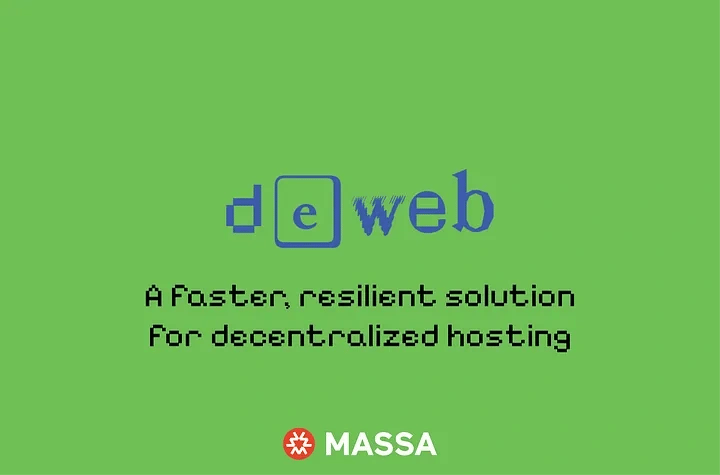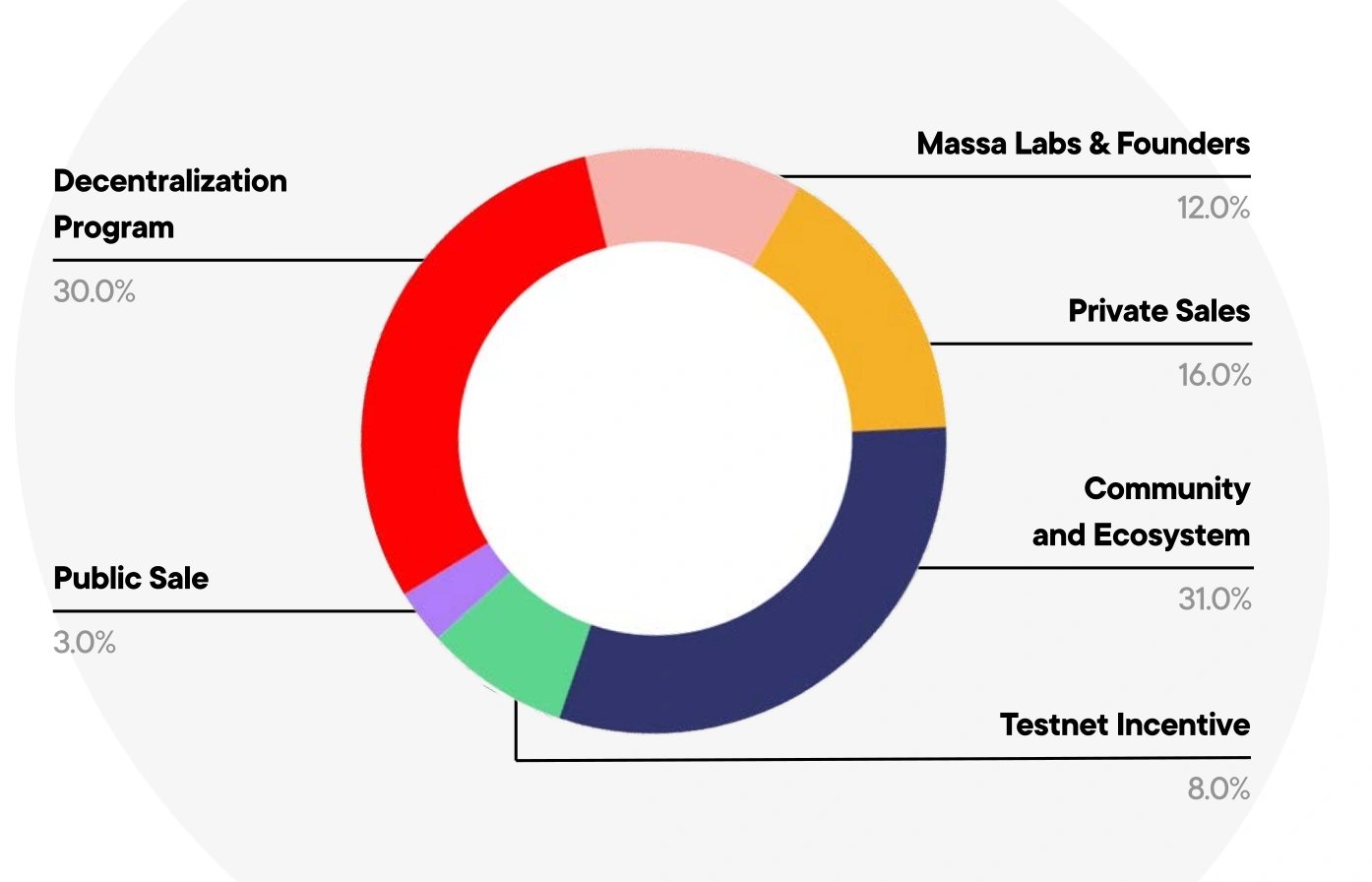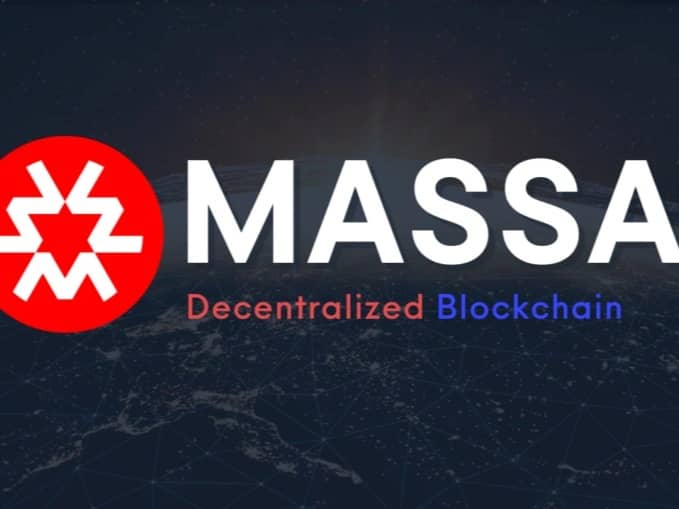위키 구독하기
Share wiki
Bookmark
Massa
Massa
Massa(마사)는 확장성, 효율성 및 분산화를 위해 설계된 공용 계층 1 블록체인으로, 높은 트랜잭션 처리량을 지원할 수 있는 지분 증명 합의 메커니즘을 활용합니다. 자율적인 스마트 계약, 분산형 웹 호스팅 및 TypeScript 기반 프로그래밍을 통한 개발자 친화적인 환경을 제공합니다. [1]
개요
Massa는 확장성, 효율성 및 보안을 위해 설계된 공용 블록체인으로, 병렬 블록 생성을 지원하고 초당 최대 10,000건의 트랜잭션을 처리하는 고유한 지분 증명 합의 메커니즘을 활용합니다. 외부 트리거 없이 작동하는 자율적인 스마트 계약, 애플리케이션을 위한 완전 분산형 호스팅 및 TypeScript 기반 스마트 계약을 통한 개발자 친화적인 환경을 특징으로 합니다. 2020년 파리에서 설립된 Massa Labs가 블록체인을 개발하고 초기 커뮤니티를 구축했으며, 2023년 제네바에 설립된 Massa Foundation은 생태계 성장, 보조금 프로그램 및 커뮤니티 이니셔티브를 관리하여 분산화를 최우선 과제로 유지합니다. Massa의 계층 1 블록체인은 검증자 노드 실행에 대한 요구 사항이 낮고 베타 메인넷에서 8,000개 이상의 노드가 작동하는 등 접근성을 강조합니다. 거버넌스 포럼, 이벤트 및 협업적인 의사 결정을 통해 커뮤니티 참여를 장려합니다. [2] [3]
기능
DeWeb

Massa 블록체인의 분산형 웹(DeWeb)은 네트워크의 모든 노드에 웹사이트 데이터를 복제하여 중앙 집중식 서버에 대한 의존성을 제거함으로써 지속적인 가동 시간과 웹 위협에 대한 복원력을 보장합니다. 이 방법은 분산형 스토리지를 사용하여 서버나 인프라를 유지 관리할 필요 없이 안정성을 향상시킵니다. Massa 블록체인에 호스팅된 웹사이트는 변경할 수 없으며 무단 수정으로부터 보호되고 외부 종속성 없이 작동합니다.
DeWeb은 고유한 ".massa" 도메인 이름을 등록하고 탐색을 간소화하며 DNS 관련 취약성으로부터 보호하기 위해 Massa Name Service(MNS)를 도입합니다. 개발자는 인터페이스에 HTML 및 JavaScript와 같은 친숙한 기술을 사용하고 자율적인 스마트 계약에는 AssemblyScript를 사용하여 프런트엔드 및 백엔드 구성 요소를 블록체인에 직접 호스팅할 수 있습니다. 이 프레임워크를 통해 독립적으로 작동하는 완전한 분산형 애플리케이션(dApp)을 생성하여 안전하고 검열 저항적인 웹 생태계를 제공합니다. [4] [5]
Massa Bridge
Massa Bridge는 크로스체인 자산 전송을 용이하게 하여 사용자가 USDC, DAI 및 WETH와 같은 토큰을 이더리움에서 Massa 생태계로 이동할 수 있도록 합니다. 이를 통해 Massa 네트워크에서 합성 자산을 생성할 수 있으며, 이더리움에서 동일한 양을 잠금으로써 1:1 페깅으로 토큰이 민팅됩니다. 효율성을 위해 프로세스를 시작하고 지갑을 연결한 후 빠르게 전송이 이루어집니다.
다중 서명 아키텍처, 감사된 스마트 계약 및 악의적인 활동을 감지하고 방지하기 위한 쿨다운 메커니즘과 같은 안전 장치를 통해 보안이 우선시됩니다. 이는 잠긴 자산의 무결성을 보장하고 크로스체인 운영에 대한 신뢰를 높입니다. Massa Bridge는 다중 체인 방식을 지원하며 향후 더 많은 EVM 호환 블록체인을 통합하여 Massa 생태계 내의 유동성과 DeFi 기회를 확장하는 것을 목표로 합니다. [6] [7] [8]
Massa Station

Massa Station은 웹 브라우저를 통해 Massa 블록체인과의 상호 작용을 용이하게 하는 데스크톱 애플리케이션입니다. 시각적 인터페이스를 선호하는 사용자를 위해 설계되었으며, 내장 지갑 및 분산형 웹 탐색 도구를 포함한 블록체인 기반 모듈에 대한 액세스를 제공하는 애플리케이션 허브 역할을 합니다. 사용자는 .massa 도메인을 통해 완전히 온체인에 호스팅된 웹사이트와 상호 작용하여 분산형 액세스와 향상된 보안을 보장합니다.
이 플랫폼은 모듈성을 강조하여 개발자와 커뮤니티가 Massa Plugin Store를 통해 추가 기능을 만들고 공유할 수 있도록 합니다. Massa Station은 브라우저 제한과 독립적으로 작동하여 더 큰 기술적 유연성과 개발 자유를 제공합니다. 핵심 모듈에는 안전한 계정 및 트랜잭션 관리를 위한 Massa Wallet과 분산형 애플리케이션에 대한 지원이 포함되며, 온체인 웹 호스팅은 중앙 집중식 서버와 관련된 취약성을 제거합니다. [9] [10] [11]
MAS
Massa 토큰(MAS)은 공정성과 분산화를 우선시하도록 설계된 토큰 경제학 모델에 따라 작동합니다. Massa는 1,000을 초과하는 나카모토 계수를 통해 광범위하게 분산되고 안전한 네트워크를 의미하는 높은 수준의 분산화를 달성하는 것을 목표로 합니다. 이러한 접근 방식은 커뮤니티 간의 광범위한 분산을 보장하여 중앙 집중화와 관련된 위험(예: [12]):
- 거버넌스 불균형: 집중된 토큰 소유권은 소수의 기관이 거버넌스 프로세스를 지배할 수 있도록 하여 분산형 의사 결정을 약화시킬 수 있습니다.
- 시장 조작: 대량 보유자는 토큰 가격에 영향을 미쳐 실제 가치를 흐리는 인위적인 변동을 만들 수 있습니다.
- 보안 위험: 중앙 집중식 소유권은 네트워크를 표적 공격에 더 취약하게 만들고 블록 생성 제어를 집중시켜 프로토콜 수준의 위험을 증가시킴으로써 취약성을 도입합니다.
토큰 경제학

MAS는 무한한 최대 공급량을 가지며 다음과 같은 분포를 가지고 있습니다. [12]
- 커뮤니티/생태계: 31%
- 분산화 프로그램: 30%
- 프라이빗 세일: 16%
- Massa Labs/설립자: 12%
- 테스트넷 인센티브: 8%
- 퍼블릭 세일: 3%
파트너십
잘못된 내용이 있나요?
